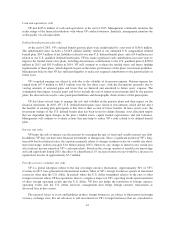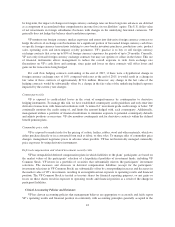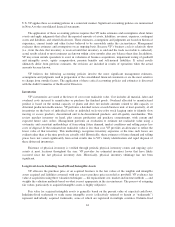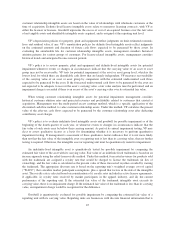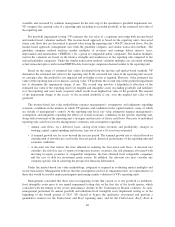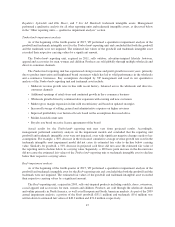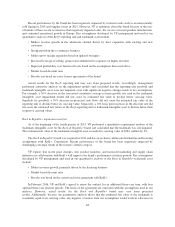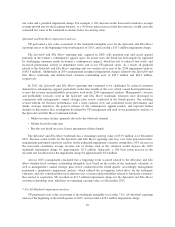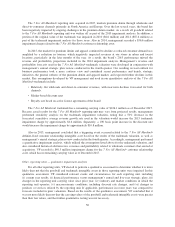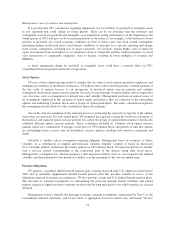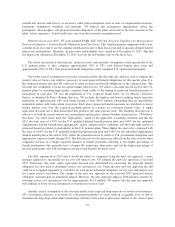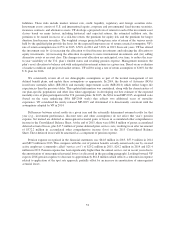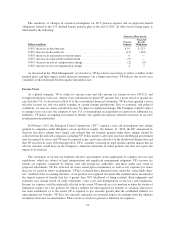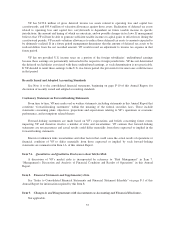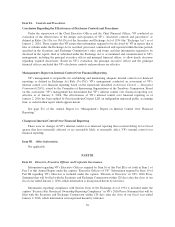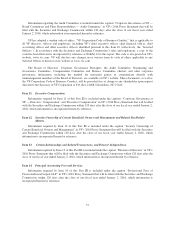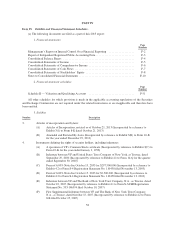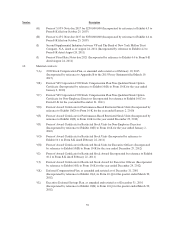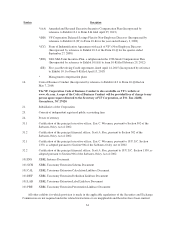North Face 2015 Annual Report Download - page 66
Download and view the complete annual report
Please find page 66 of the 2015 North Face annual report below. You can navigate through the pages in the report by either clicking on the pages listed below, or by using the keyword search tool below to find specific information within the annual report.periodically reviews and revises, as necessary, other plan assumptions such as rates of compensation increases,
retirement, termination, disability and mortality. VF believes the assumptions appropriately reflect the
participants’ demographics and projected benefit obligations of the plans and result in the best estimate of the
plans’ future experience. Actual results may vary from the actuarial assumptions used.
Effective fiscal year 2015, VF early-adopted FASB ASU 2015-04, Practical Expedient for Measurement
Date of an Employer’s Defined Benefit Obligation and Plan Assets. This standard permits companies with a non-
calendar fiscal year-end to use the calendar month end closest to their fiscal year-end to measure defined benefit
plan assets and liabilities. Therefore, all plan assets and liabilities were valued as of December 31, 2015. This did
not impact our valuation as December 31, 2015 was also the last business day of our fiscal year.
The below discussion of discount rate, return on assets and mortality assumptions relate specifically to the
U.S. pension plans, as they comprise approximately 93% of VF’s total defined benefit plan assets and
approximately 92% of VF’s total projected benefit obligations of the combined U.S. and international plans.
One of the critical assumptions used in the actuarial model is the discount rate, which is used to estimate the
present value of future cash outflows necessary to meet projected benefit obligations for the specific plan. It is
the estimated interest rate that VF could use to settle its projected benefit obligations at the valuation date. The
discount rate assumption is based on current market interest rates. VF selects a discount rate for each of the U.S.
pension plans by matching high quality corporate bond yields to the timing of projected benefit payments to
participants in each plan. VF uses the population of U.S. corporate bonds rated ‘Aa’ by Moody’s Investors
Service or Standard & Poor’s Ratings Services. VF excludes the highest and lowest yielding bonds from this
population of approximately 688 such bonds having at least $50.0 million outstanding that are noncallable/
nonputable unless with make-whole provisions. Each plan’s projected benefit payments are matched to current
market interest rates over the expected payment period to calculate an associated present value. A single
equivalent discount rate is then determined that produces the same present value. The resulting discount rate is
reflective of both the current interest rate environment and the plan’s distinct liability characteristics. VF believes
that those ‘Aa’ rated issues meet the “high quality” intent of the applicable accounting standards and that the
2015 discount rates of 4.45% for the U.S. qualified defined benefit pension plan and 4.44% for the unfunded
supplemental defined benefit plan appropriately reflect current market conditions and the long-term nature of
projected benefit payments to participants in the U.S. pension plans. These higher discount rates, compared with
the rates of 4.05% for the U.S. qualified defined benefit pension plan and 4.00% for the unfunded supplemental
defined benefit plan at the end of 2014, reflect the general increase in yields of U.S. government obligations and
high quality corporate bonds during 2015. The discount rate for the plans may differ from the rates used by other
companies because of a longer expected duration of benefit payments reflecting (i) the higher percentage of
female participants who generally have a longer life expectancy than males and (ii) the higher percentage of
inactive participants who will not begin receiving vested benefits for many years.
The SEC announced in 2015 that it would not object to companies using the spot rate approach, a more
granular approach to measuring service cost and interest cost. VF adopted the spot rate approach at year-end
2015. Previously, the same single equivalent discount rate determined for measuring the projected benefit
obligation was also used to determine service cost and interest cost. Under the new spot rate approach, the full
yield curve is applied separately to cash flows for each projected benefit obligation, service cost, and interest cost
for a more precise calculation. The change to the spot rate approach on the year-end 2015 projected benefit
obligation valuation had an immaterial impact. However, the new approach impacts 2016 pension expense by
lowering service cost and interest cost by approximately $13.5 million. VF expects that the spot rate approach
will continue to lower service and interest cost in the next several years.
Another critical assumption of the actuarial model is the expected long-term rate of return on investments.
VF’s investment objective is to invest in a diversified portfolio of assets with an acceptable level of risk to
maximize the long-term return while minimizing volatility in the value of plan assets relative to the value of plan
52


